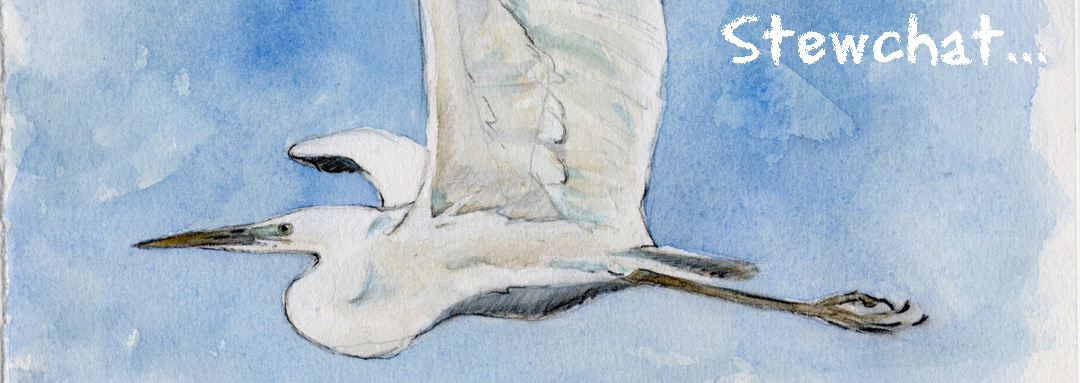Part 1...
The only bit of the April issue of British Birds I have read so far is the paper on the carbon footprint of birders. It goes on to say that twitching and foreign holidays are not good for the planet, but the recent upsurge in Local Patch birding is the best way forward in terms of helping with global warming, pollution and use of resources etc.
I light of this I changed my early plans to visit Holy Island again ( a 60 mile round trip in a diesel car) and stayed at my newly shrunk local patch. When I did the Patchwork Challenge I made the boundaries fit the 3 sq km criteria that can be seen in the map in the side bar on the right.
In reality, most of that is visited very infrequently, so I have cropped the area down to under 1 sq km -
You can see this is a very small area with only a few fields a short stretch of rocky coast and a bit of parkland with a small pond. This is a real patch to me, one that I walk around daily with the dog and a good percentage can even be seen from home.
Now, some might wonder about this, but having a patch is not just about accumulating as much of the British List as possible by stretching boundaries into every conceivable habitat just so you can get a Nuthatch or see a Gannet 5 miles away from a high point inland. For me, it is very simple in that no matter the area, its about seeing what occurs there by regular observation. Whether it is a car park or the Serengetti, just see what you can get. One man's Pied Wagtail is another man's Siberian Thrush. Certainly in a patch context anyway, and this doesnt stop you venturing away to see good birds elsewhere, it just means you will learn your patch wildlife very well indeed.
So, back to today. My target, after the easterlies and rain yesterday, was Black Redstart.
Northumberland is sinking under the weight of the bloody things, so I scoured my perfect Black Red habitat along the coastal cliffs and found.... None. I found, 3 pairs of displaying Rock Pipits, 2 singing Reed Buntings and 2 migrant Goldcrests, and that was about it. Nothing earth shattering there, but breeding Rock Pipits are good, Reed Bunts are scarce on patch and Goldcrests migrating are a pleasure to see, and thats what local patch birding should be about.
 |
| Two Goldcrests were on a barbed wire fence with not a pine in sight... |
 |
| Singing male Reed Bunting. |
Part 2...
Having donned a hair shirt this morning and put in the time where no one else would, it was time for some excitement and fossil fuel usage ( sorry).
20 miles away, Gary Storey had found a male
White spotted Bluethroat on the beach at Newbiggin (oh why couldn't it be me!) so I decided to give it a look. I have only seen one White spot in the county before and this bird has some history for me, having read, with awe, about the one Ennion found near Beadnell in the 50's, so the adrenaline was pumping. We used to get regular Red spotted Bluethroats when the wind turned East in May, but not for many years now. The Reds have a narrow window of occurrence from about 12th - 20th May usually so any Bluethroat in April will be a White spot.
I arrived at 2.30pm with the tide well up the beach pushing birders closer to the bird's favoured spot in turn making it quite flighty. It finally moved north a bit where the wider beach gave more breathing space, and some decent views were had, a stunning little chat, you can never get enough of these...
With snow forecast for tomorrow, I am glad to have seen some sunshine and good birds this weekend... Happy Easter!























